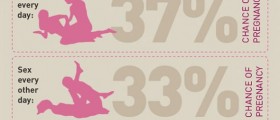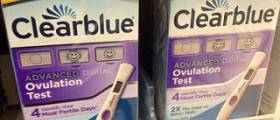
The menstrual cycle
Menstrual cycle is a process of physiological changes that repeats itself each month in fertile and healthy women. It starts the first day of the menstrual period and ends jjjust before the next one. It involves four basic phases- menstruation, follicular phase, ovulation and luteal phase.
Menstruation, menses or menstrual bleeding, unlike other phases, is very easy to identify, due to shedding and evacuation of the endometrium, in form of blood and small clots through the vagina. The very first menstruation marks the beginning of a woman’s fertile age, which lasts all the way to menopause, when a woman is no longer capable of having children and the menstruations stop.
Ovulation is another important part of the menstrual cycle, especially when it comes to fertility. During the cycle, the body releases hormones that stimulate formation and growth of an egg in the ovaries. When the egg is mature and ready to be fertilized, it is released from the ovaries, through fallopian tubes. This process is called ovulation.
Ovulation takes place in the middle of the cycle. In women who have regular menstruation, for example every 28 days, ovulation takes place around days 13 to 19 of the cycle.
Menstrual cycle and fertility
A woman cannot get pregnant at any given point during her menstrual cycle. Certain days of the cycle are more favorable for conception and others are not. There are so-called fertile and infertile days in each cycle and knowing when they occur is very useful in family planning. Calculating fertile and unfertile days is used by many women as a form of prevention against unwanted pregnancy, meaning they can have unprotected sex on unfertile days with minimal risk of becoming pregnant. On the other hand, women who are trying to become pregnant focus on fertile days, when the fertilization of the egg is most likely to take place.
A woman is most likely to become pregnant if sexual intercourse takes place around the time of ovulation. Ovulation occurs in the middle of the menstrual cycle. Women who have regular cycles from 26 to 32 days probably ovulate between days 8 and 19. Ovulation may involve certain symptoms, such as breast tenderness and mild abdominal pain, which helps to identify ovulation days more precisely. Those who rely completely on their cycle when it comes to fertility can also use parameters like cervical mucus and basal body temperature, which change during ovulation.
The situation is more difficult for women who do not have regular periods, because for them it is hard to calculate the exact time of the ovulation. Many women with irregular periods can get pregnant at any point of the cycle.
















Your thoughts on this
Loading...